
BepiColombo is a joint mission between the European Space Agency (ESA) and the Japanese Aerospace Exploration Agency (JAXA) to study Mercury from its orbit under ESA's leadership.
Russian scientists take part in the scientific program of the mission. Four instruments of the scientific payload are developed partly (three) or entirely (one) at IKI. Russian researchers are principal investigators and co-principal investigators of the number of experiments.
Russia's participation in the BepiColombo project is stipulated by the Federal Space Program of Russia.
Scientific Goals
- investigate the origin and evolution of a planet close to the parent star;
- study Mercury as a planet: its form, interior structure, geology, composition, and craters;
- examine Mercury's vestigial atmosphere (exosphere): its composition and dynamics;
- probe Mercury's magnetized envelope (magnetosphere): its structure and dynamics;
- determine the origin of Mercury's magnetic field and study its parameters;
- investigate the effect of exo- and endogenous processes on the surface: study the craters' origin, tectonics, volcanism, composition, and origin of deposits at the planet's poles;
- perform a test of Einstein's theory of general relativity.
Mission Overview
The project was named after Giuseppe (Bepi) Colombo (1920–1984), an Italian mathematician and engineer, Professor of the University of Padua, whose name is inextricably linked to Mercury research. Giuseppe Colombo explained mathematically Mercury's peculiar habit of rotating three times in every two revolutions of the Sun (two Mercurial years). He was the one who proposed using gravity assists at Venus in the Mariner 10 project (NASA) to study Mercury from a flyby trajectory (three flybys in 1974–75).
BepiColombo mission can possibly shed light on many still unanswered questions about the origin of the Solar system, peculiarities of Mercury's formation, its structure, its interaction with the solar wind. One specifically interesting problem is how volatiles (including water ice) can remain intact on the planet's surface despite an extremely close distance to the Sun. Mercury's close proximity to the Sun can be used to test the predictions of general relativity with even greater precision than it has been done before.
Mission Structure
BepiColombo comprises two spacecraft, which will operate in different orbits around Mercury, and two auxiliary structural elements necessary for cruise phase and orbit insertion:
- Mercury Planetary Orbiter (MPO). Leading agency: ESA. The main task of MPO is to map the Mercury surface from the polar orbit of 480×1500 km, 2.3 hours period. The scientific payload includes 11 instruments
- Mercury Magnetospheric Orbiter (MMO), also referred to as Mio. Leading agency: JAXA. The main task of Mio to study the Mercury magnetosphere in the polar orbit at an altitude of 590×11, 640 km, 9.3 hours period. The scientific payload includes 5 instruments
- Both satellites will be connected at cruise phase with Mercury Transfer Module (MTM) developed by ESA
- During the cruise phase and maneuvers near Mercury the spacecraft will be protected by MOSIF (MMO Sunshield and Interface Structure) heat shield
Russian Contribution To the Mission
- MGNS (Mercury Gamma-ray and Neutron Spectrometer) to study the elemental composition of Mercury’s surface, which will help to refine ideas about the formation and evolution of the planet; to measure potassium to thorium ratio and compare this value with other inner planets'; to study polar regions of Mercury and compare them with polar regions of Moon. The instrument was developed at IKI Nuclear Planetology Department. Principal Investigator: Dr. Igor G. Mitrofanov (IKI). Spacecraft: MPO
- PHEBUS (Probing of Hermean Exosphere by Ultraviolet Spectroscopy). Ultraviolet spectrometer to study the composition and dynamics of the Mercurial exosphere. The instrument was developed by French National Center for Space Studies (Centre national d'etudes spatiales, CNES). An input optical unit with a pointing system was developed at IKI Planetary Physics Department. Co-Principal Investigator from the Russian side: Corresponding Member of RAS Oleg I. Korablev (IKI RAS). Spacecraft: MPO
- MSASI (Mercury Sodium Atmospheric Spectral Imager). A sodium light observation camera to determine the sodium origins in Mercury's exosphere. The instrument was developed in joint cooperation between Russia and Japan. The Russian contribution is an optical mechanical scanning imager, developed at IKI Planetary Physics Department. Co-Principal Investigator from the Russian side: Corresponding Member of the Russian Academy of Sciences Oleg I. Korablev (IKI RAS). Spacecraft: MMO
- PICAM (Planetary Ion Camera). Panoramic energy-mass spectrometer for positively charged ions, part of SERENA (Search for Exospheric Refilling and Emitted Natural Abundances) plasma experiment. The objectives of the experiment: to determine the chemical composition of the surface, to study the physics of neutral particles ejection from the planet surface and to measure the fluxes of magnetospheric ions, which return to the surface; to understand whether Mercury has ionosphere and how plasma convection occurs in its vicinity, to clarify the structure of the magnetosphere and its interaction with the solar wind. SERENA plasma experiment is a joint development of scientists from Austria, France, and Russia. IKI contribution is electron-optical digital logic developed at IKI Space Plasma Physics Department. Co-Principal Investigator from the Russian side of SERENA: Dr. Oleg L. Vaisberg (IKI RAS). Spacecraft: MPO
Mission Operations
The cruise phase to Mercury lasts over 7 years. During this time the spacecraft will make nine gravity assists at Earth, Venus (two times) and Mercury (six times). Arrival at Mercury is scheduled for December 2025.
Nominal mission science operations are scheduled to be performed for one Earth or four Mercury years with a planned extension for the same period.
UPD Sept.4, 2024: the initial schedule was changed so as to overcome an issue with MTM's electric thrusters. The dates below were updated, but might as well change in the course of the mission.
| 10.04.2020 |
Earth flyby ✓ |
| 16.10.2020 |
first Venus flyby ✓ |
| 10.08.2021 |
second Venus flyby ✓ |
| 01–02.10.2021 |
first Mercury flyby The day of Giuseppe Colombo’s birth! ✓ |
| 23.06.2022 |
second Mercury flyby ✓ |
| 19.06.2023 |
third Mercury flyby ✓ |
| 04.09.2024 |
fourth Mercury flyby ✓ |
| 01.12.2024 |
fifth Mercury flyby ✓ |
| 08.01.2025 |
sixth Mercury flyby ✓ |
| 11.2026 |
arrival at Mercury |
| 04.2028 |
end of nominal mission |
| 04.2029 |
end of extended mission |
Leading Organizations and Principal Investigators
For Russian PI's, please, refer to the instruments' description in "Mission Overview" section.
Websites
- BepiColombo project for the media on the ESA portal
- BepiColombo project on the ESA portal: http://sci.esa.int/bepicolombo/ and http://www.esa.int/Our_Activities/Space_Science/BepiColombo
- BepiColombo mission plan on ESA Ground Operations website
- BepiColombo for scientists and engineers on ESA portal
- BepiColombo project on the JAXA portal
- BepiColombo project profile and FEBUS and MSASI experiments on the website of the IKI Planetary Physics Department
- MGNS experiment on the website of the IKI Nuclear Planetology Department
Gallery
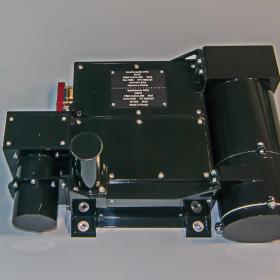
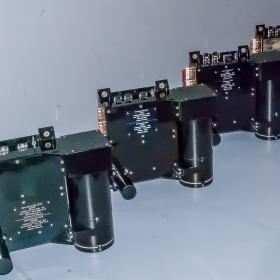
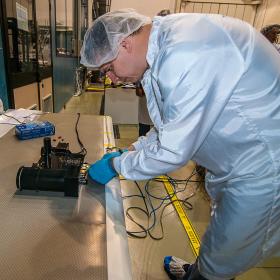
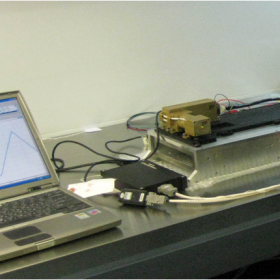
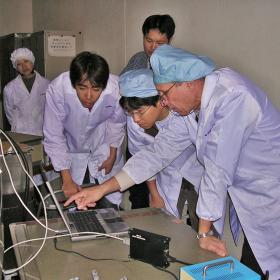
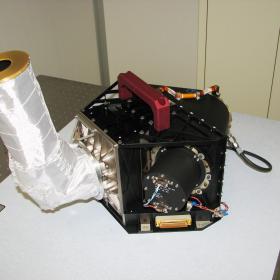
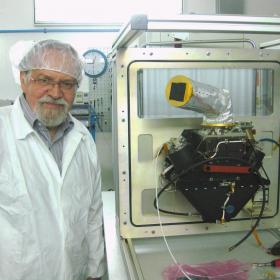
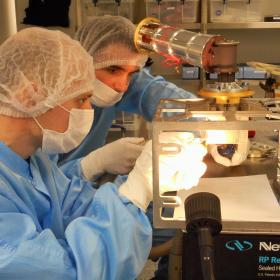
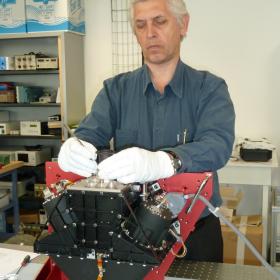
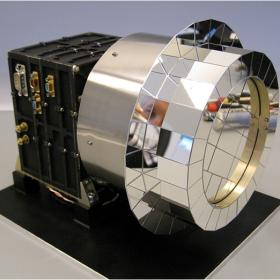
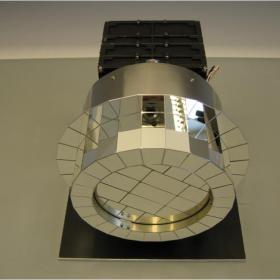
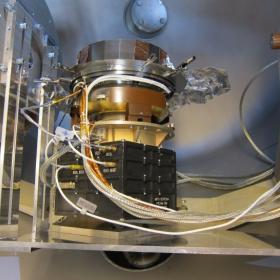
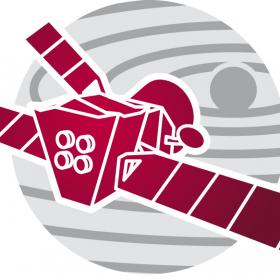
BepiColombo
Status: in operation
Launch: October 20, 2018, 04:45 Moscow time, Kourou Spaceport (French Guiana), Ariane 5
Leading space agency: ESA, JAXA
SCN: 43653
NSSDC ID: 2018-080A
Main website: BepiColombo on esa.int and BepiColombo on sci.esa.int
MGNS
Status: in operation
Leading space agency: ROSCOSMOS
Main website: MGNS Mercurial Gamma-ray and Neutron Spectrometer for the ESA BepiColombo space mission
PHEBUS
Status: in operation
Leading space agency: ROSCOSMOS
Main website: Ультрафиолетовый спектрометр PHEBUS (IKI, in Russian)
MSASI
Status: in operation
Leading space agency: ROSCOSMOS
Main website: Камера наблюдения в лучах натрия MSASI (IKI, in Russian)
